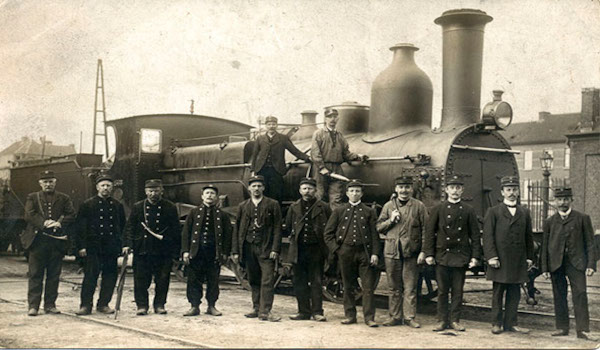Abstract of Donald Weber, Birth of a Commuter Society: Workingmen’s Trains in Belgium, 1870–1914.
In 1870 the so-called workingmen’s trains made their appearance on the Belgian railway network, special trains that ran in the morning and in the evening and that took thousands of labourers from the countryside to the factories in the big cities. For very little money a worker could buy a weekly pass for such trains, and bring high industry wages home to his family without having to move to the depraved cities.
Around 1900 one out of five Belgian industrial workers was using the workers pass. With state support the whole country was thus reshaped into one large labour market. But there was an unexpected ricochet: the unskilled worker from the countryside took a deep breath of city air, got to know how train stations and suburbs worked, cashed in on industry wages, and listened to socialist propaganda on the way back home.
What had been started as a measure to protect and preserve a rural lifestyle, over time led to the emergence of another kind of lifestyle: the modern-day middle-class commuter in his or her suburban kitchen garden.
Since the book is rather expensive, find an author's proof copy of this contribution attached below.

This volume explores the relationship between cities and railways over three centuries. Despite their nearly 200-year existence, The City and the Railway in the World shows that urban railways are still politically and historically important to the modern world.
Since its inception, cities have played a significant role in the railway system; cities were among the main reasons for building such efficient but lavish and costly modes of transport for persons, goods, and information. They also influenced the technological appearance of railways as these have had to meet particular demands for transport in urban areas. In 25 essays, this volume demonstrates that the relationship between the city and the railway is one of the most publicly debated themes in the context of daily lives in growing urban settings, as well as in the second urbanisation of the global South with migration from rural to urban landscapes. The volume’s broad geographical range includes discussions of railway networks, railway stations, and urban rails in countries such as India, Japan, England, Belgium, Romania, Nigeria, the USA, and Mexico.
The City and the Railway in the World will be a useful tool for scholars interested in the history of transport, travel, and urban change.








